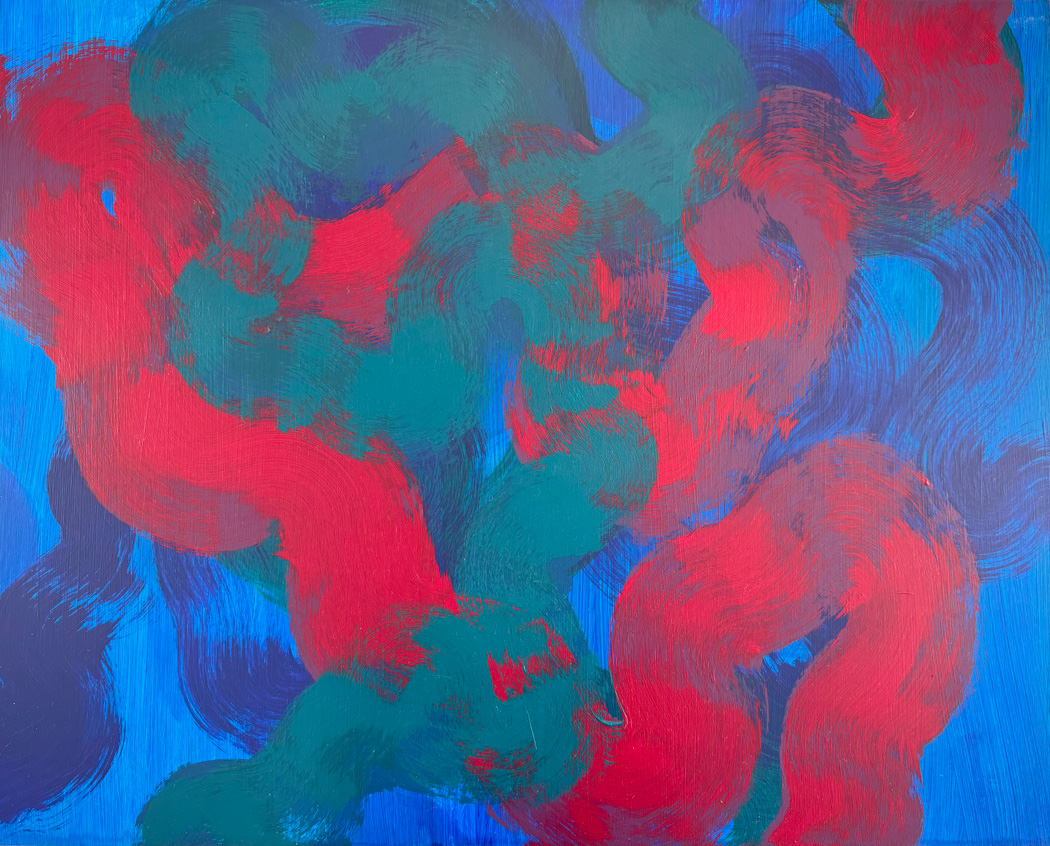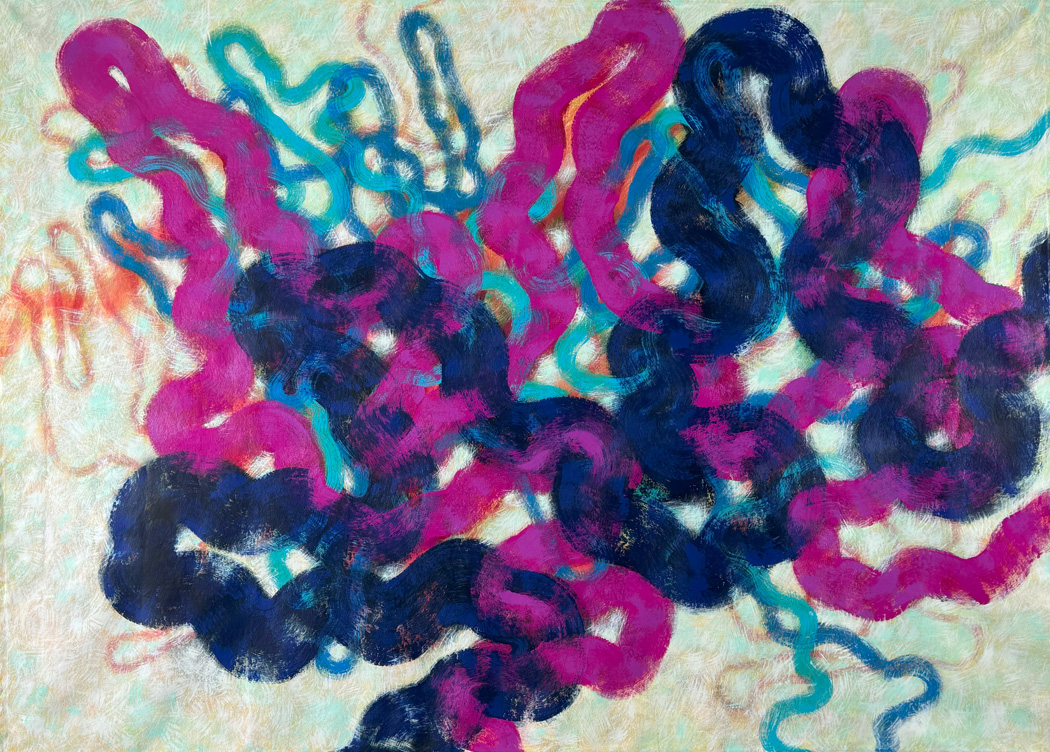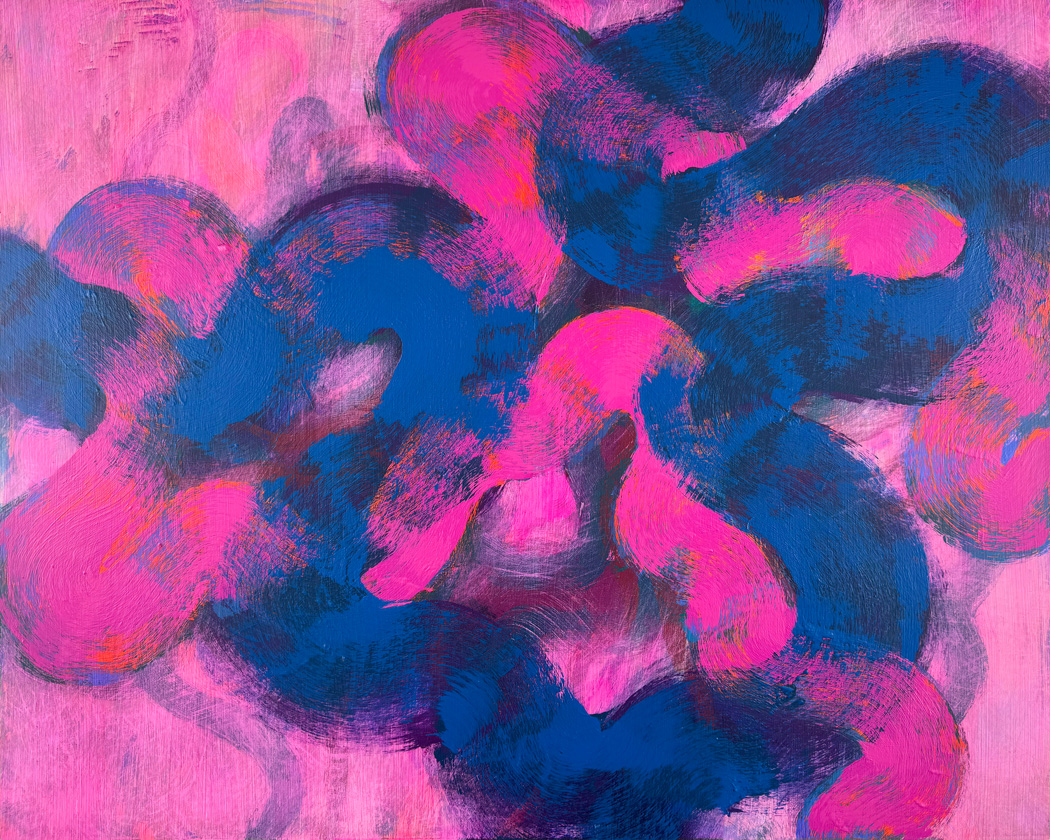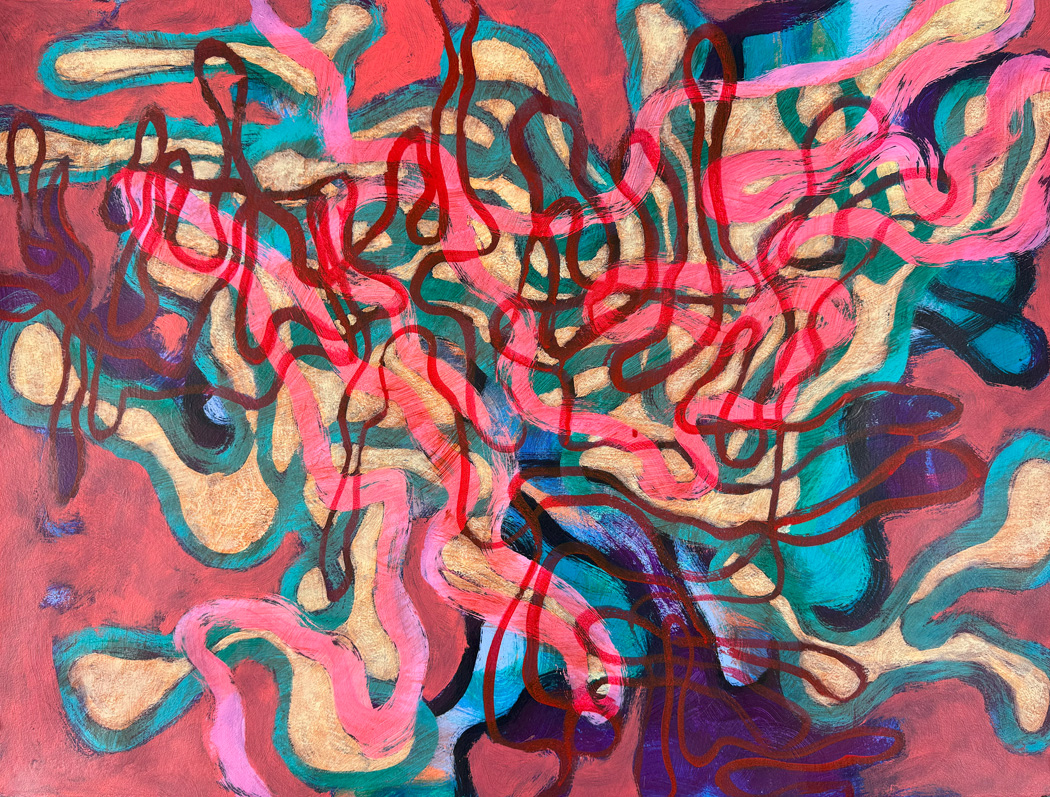Robert Sumner
Where do you live: Portland, Oregon.
Your education: I have a BA in Arts Administration, Old Dominion University, and an MBA from the University of California at Davis. I was pursuing a BFA with the intent of continuing on to an MFA program, but during my fourth year of the BFA program the university I was attending discovered I was gay and disenrolled me. After that disruption, I returned to school a few years later and made a practical choice to go into business while pursuing my love of the visual arts in my free time.
Describe your art in three words: Color, movement, openness. Joy.
Your discipline: Painting and printmaking.
Website | Instagram
 Robert Sumner | Tangnesshiegrum
Robert Sumner | Tangnesshiegrum
Your works are full of movement and rhythm. Do you see your paintings as visual music?
Yes, although my work is not intended to be a visual illustration of music it is one very important influence on my work and I often use it as a framework or reference point to explore color, form, and composition. My recent solo shows at the Hoffman Center for the Arts and at the Czong Institute for Contemporary Art are both titled ‘Visual Music.’ I’m fascinated by, and love to explore, the parallels between music and visual experience such as repetition, improvisation, melody, harmony, and syncopation. Even the concept of the linear progression of time, which is inherent in music, is captured in painting as decisions about color, texture, tone, visual structure, etc. They are recorded in the paint itself. It’s as if a painting can physically capture time, which to me seems almost magical.
Can you describe your creative process — do you plan compositions in advance, or do they evolve spontaneously?
It’s a little bit of both. There are times when I see an image while reading or listening to music and I try to get down on paper and those sketches then lead to a composition on canvas. Other times I start with a blank canvas, get myself into the right headspace by bringing my mind to a state of stillness and then start painting as it comes to me. Regardless of how an image begins, each painting is a journey, and each additional brushstroke adds another variable to the composition which needs to be considered, which means that the finished artwork will have traveled some distance from the initial ideas and images.
 Robert Sumner | Upslomtimepamyyou
Robert Sumner | Upslomtimepamyyou
How has your background in arts administration and business influenced your artistic practice?
Corporate culture requires a very different mindset than artistic practice, and having to toggle between the two makes it easier now for me to manage the business side of making art full time. There are obviously a number of business skills that are transferrable to an artist but the thing my time in Corporate America taught me most was how valuable the time in my studio is. While working full time I never had enough studio time, and so when I moved to creating art full time I had years of pent-up hunger for, and a deep appreciation of the time spend thinking about and creating art.
You mention synesthesia and pre-verbal communication — do you personally experience any form of synesthesia?
Yes, when I am able to fully concentrate listening to music or reading certain authors the experience becomes like watching the music with my eyes closed, or seeing images flit across a movie screen as I read a story. Some of these images go directly to paper/canvas to start the formation of a composition.
 Robert Sumner | Roomschorusprious
Robert Sumner | Roomschorusprious
Your color palettes are bold and expressive. How do you choose your colors? Do they represent emotions, sounds, or something else?
There are a number of influences that feed into my color choice, one of which is the season of the year. I live in the Pacific Northwest of the US and have converted my garage into a painting studio and I keep the garage door open, which means I am basically painting outside for most of the year. I’ve found that my palette often cools down in the winter and warms back up in the spring. I wouldn’t say there is a one-to-one relationship between a color and an emotion or sound, but I believe there is an inherent value and joy in beauty and what can be more beautiful than the interplay of color?
What role does improvisation play in your painting practice?
I believe that improvisation plays a role in creating interesting art regardless of the artist, medium, or genre. Even in the most representational work, the artist will improvise as they respond to the work as it grows and the final piece will be different, even if only in subtle ways, than the original vision in the artist’s head. For me, improvisation plays a big role. As the work develops, I am always asking myself where it is going next, what the image is lacking, and how to move it forward. Every time I add a new element, whether it’s a new line, a new color, a new texture, it shifts all of the relationships in the entire work. Sometimes it works and the new addition helps everything else sync up. Sometimes it doesn’t and I have to come up with something new to bring things back into balance. For example, perhaps the shade of green I add makes the other greens in the image yellow shift yellow in relation to it, altering how they interact with, let say, the purple. And so, something needs to change.
 Robert Sumner | Nythetiers
Robert Sumner | Nythetiers
You developed a unique approach to titling your works using syllables from Finnegans Wake. What drew you to this text and method?
Conceptually, my objective when creating an image is to end up with an abstract visual matrix that is subtly suggestive to the viewer but not determinative, leaving room for the viewer to bring their own experience and history to the conversation with the work. Titles, on the other hand, can be very specific or narrow and can have the effect of limiting the viewer’s visual and conceptual exploration of the work. For example, if I were to title a work ‘Fugue in Blue’ a viewer may think of only music and color, and not think to themselves, “Those squiggles remind me sea creatures!” So I began looking for a way to develop titles that were as conceptually open as I hope my visual images are. The prose of Finnegans Wake uses words laden with layers of meaning while still leaving room for the reader to bring their own experience and knowledge to bear upon the text, which means James Joyce had a similar objective for this book as I do for my paintings. This made Finnegans Wake the natural choice as a source of material for titles, and in a nod to the Dada artists I decided to put random syllables together to form titles. Hopefully they are puzzling enough to raise questions in the viewer’s mind and create an open space for contemplation.

Leave a Reply